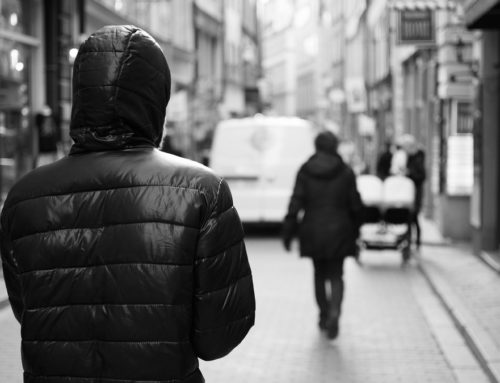Mother Nature is extremely unpredictable. People in New England know it all too well! There’s even a saying,” If you don’t like the weather in New England now, just wait a few minutes.” We seem to be forced to brave all of the elements around here. The reality is that although we are most often able to protect ourselves from natural disasters, there are unfortunate events that occur all around the world and in our country. Mother Nature can really throw the planet some challenges. Too much of any weather condition can be enough to test our safety and our communities. Too much heat, too much cold, too much rain, too much wind are just some of the problems that can wreck havoc. We are often warned that we need to expect, and be prepared for a major emergency. We may expect weather forecasters and emergency crews to fully anticipate and control natural events. But, even with the best technology these predictions provide an educated guess or potential framework of what may actually happen. The one thing we can expect is the unpredictability factor of Mother Nature. When a natural disaster strikes, there are a lot of things you have no control over. Conversely, here are many things you can do before a disaster strikes to prepare yourself and make sure that you and your loved ones are in the best possible position to handle whatever may happen.
We would like to take a moment to send our thoughts and prayers to those affected by the storms in Texas and those who may be in the path of the hurricane headed towards Florida.
If you or a loved one is looking for up to date information on Irma in Florida, please use: FL511.com
Florida 511
Florida’s 511 Traveler Information System is one of the most effective ways drivers can keep informed about roadway conditions during severe weather, evacuations and emergencies.
Can I use 511 during an emergency?
Yes. FDOT provides 511 to help Floridians get vital roadway information during an emergency: hurricanes, flooding, wildfires, high winds and others.
Will I be able to get through to 511 during an emergency?
FDOT designed the 511 phone system to handle a large volume of calls. Depending on the volume of calls, some callers may get connected to a touch-tone only mode.
You can also download the Florida 511 app for Apple and Android devices to get access to the same information.
What kind of information does 511 provide?
511 provides locally generated reports on:
- Traffic conditions on major evacuation routes
- Road and bridge closures
- Toll suspensions
- Other travel alerts in affected counties, cities, roadways and agencies
In light of the recent events and damage associated with Harvey & Irma, we want to make sure that you have a plan in place to protect yourself. Whether you’ve been fortunate enough to avoid experiencing a severe natural disaster or you realize that you need a better plan in place the next time one hits, there are steps you can take. With these recent storms and devastation, it is an important time to assess your ability and preparedness to respond to disaster should it strike. Although you may think that you are prepared to deal with severe weather, Mother Nature has a mind of her own. We encourage you and your loved ones to protect yourselves from the vulnerability of her wrath. Each emergency weather system can present its own unique problems and therefore should be responded to appropriately.
Some of the basics: The Red Cross advises that you create an emergency preparedness kit that you can use at home or take with you in case of evacuation. The kit should contain non-perishable food, water (one gallon per person, per day, a three-day supply for evacuation or a two-week supply for home), a battery-powered radio, extra batteries, a first aid kit and any prescriptions, a multi-purpose tool, sanitary and hygiene products, a cell phone with a charger, copies of your personal documents (such as a list of any medications and important medical information, proof of address, the deed or lease to your home, passports, birth certificates, and insurance policies), family and emergency contact information, extra money, an emergency blanket and maps for your immediate area.
If you have young children pack any necessary formula or baby supplies, and if you have pets bring a carrier, leash, and food. If you are evacuated, proceed quickly and calmly as directed by emergency personnel. Remember that children and people with disabilities have special needs in these situations, so staying calm and assisting them in any way they need should be a primary goal. Senior Citizens are advised to create a personal support network of people who can check on you and assist you in times of emergency. Whether it consists of friends, relatives, neighbors or co-workers, the Red Cross recommends that you have at least three members in your network. Before disaster strikes, make arrangements for your support network to immediately check on you after an emergency. Give them a copy of important keys, and tell them where you keep emergency supplies. Share copies of your emergency documents, evacuation plans and emergency health information or insurance card. Discuss and practice methods for contacting each other in an emergency, including alternatives to the telephones in case they go out. You should always notify each other when you are going out of town and when you will return. Learn about each other’s needs and how to help each other in an emergency. The Red Cross also offers the “Lifeline” Program to seniors and others in need. You can contact them at 1-800-959-6989 for information.
Although many people may not expect to be caught in a potentially dangerous and extreme situation such as a natural disaster, we recommend you have a strategy just in case you’re faced with a dangerous situation. If the unthinkable does occur, having a plan and knowing what to do could make all the difference for you and your loved ones. Floods are among Earth’s most common, and most destructive, natural hazards that can strike. It’s important to understand more about flooding and what to do to stay safe.
According to www.ready.gov, you should look at your risk of being exposed to flooding.
What:
Flooding is a temporary overflowing of water onto land that is normally dry. Flooding may happen with only a few inches of water, or it may cover a house to the rooftop. There are many possible causes of floods including heavy rain or snowmelt, coastal storms and storm surge, waterway overflow from being blocked with debris or ice, or overflow of levees, dams, or waste water systems, Flooding can occur slowly over many days or happen very quickly with little or no warning, called flash floods.
Where:
Flooding can happen in any U.S. state or territory. It is particularly important to be prepared for flooding if you live in a low-lying area near a body of water, such as near a river, stream, or culvert; along a coast; or downstream from a dam or levee.
When:
Flooding can occur during every season, but some areas of the country are at greater risk at certain times of the year. Coastal areas are at greater risk for flooding during hurricane season (i.e., June to November), while the Midwest is more at risk in the spring and during heavy summer rains. Ice jams occur in the spring in the Northeast and Northwest. Even the deserts of the Southwest are at risk during the late summer monsoon season.
In fact, no other kind of natural disaster in America has caused more death and destruction than floods. According to U.S. Federal Emergency Management Agency (FEMA), here are some safety tips to prepare for rising water—and what to do once a flood has started.
Before a Flood
- Avoid building in a floodplain.
- Construct barriers (levees, beams, floodwalls) to stop floodwater from entering your home.
- Seal walls in basements with waterproofing compounds to avoid seepage.
- If a flood is likely in your area, listen to the radio or television for information.
- Know the difference between a flood watch and a flood warning. A watch means flooding is possible. A warning means flooding is occurring or will occur soon.
When a Flood Is Imminent
- Be prepared! Pack a bag with important items in case you need to evacuate. Don’t forget to include needed medications.
- If advised to evacuate your home, do so immediately.
- If there is any possibility of a flash flood, move immediately to higher ground.
- If possible, bring in outdoor furniture and move essential items to an upper floor.
- Turn off utilities at the main switches or valves if instructed to do so. Disconnect electrical appliances.
During a Flood
- Do not walk through moving water. As little as 6 inches (15 centimeters) of moving water can make you fall.
- If you have to walk in water, wherever possible, walk where the water is not moving. Use a stick to check the firmness of the ground in front of you.
- Do not drive into flooded areas. If floodwaters rise around your car, abandon the car and move to higher ground if you can do so safely.
- Do not touch electrical equipment if you are wet or standing in water.
After a Flood
- Listen for news reports to learn whether the community’s water supply is safe to drink.
- Avoid floodwaters; water may be contaminated by oil, gasoline, or raw sewage. Water may also be electrically charged from underground or downed power lines.
Avoid moving water.
- Be aware of areas where floodwaters have receded. Roads may have weakened and could collapse under the weight of a car.
- Stay away from downed power lines, and report them to the power company.
- Return home only when authorities indicate it is safe.
- Stay out of any building if it is surrounded by floodwaters.
- Service damaged septic tanks, cesspools, pits, and leaching systems as soon as possible. Damaged sewage systems are serious health hazards.
- Clean and disinfect everything that got wet. Mud left from floodwater can contain sewage and chemicals.
Unfortunately, natural disasters affect people worldwide and seem to be increasingly intense as the years go by. Devastation and destruction can be left in the wake of such events. We can’t stress enough our heartfelt prayers to those who have been affected and are currently dealing with damage in Texas. We encourage you to help, if possible with relief efforts and to take care of yourselves and each other. Stay safe.
Sources:
https://www.fema.gov/
https://www.ready.gov/






